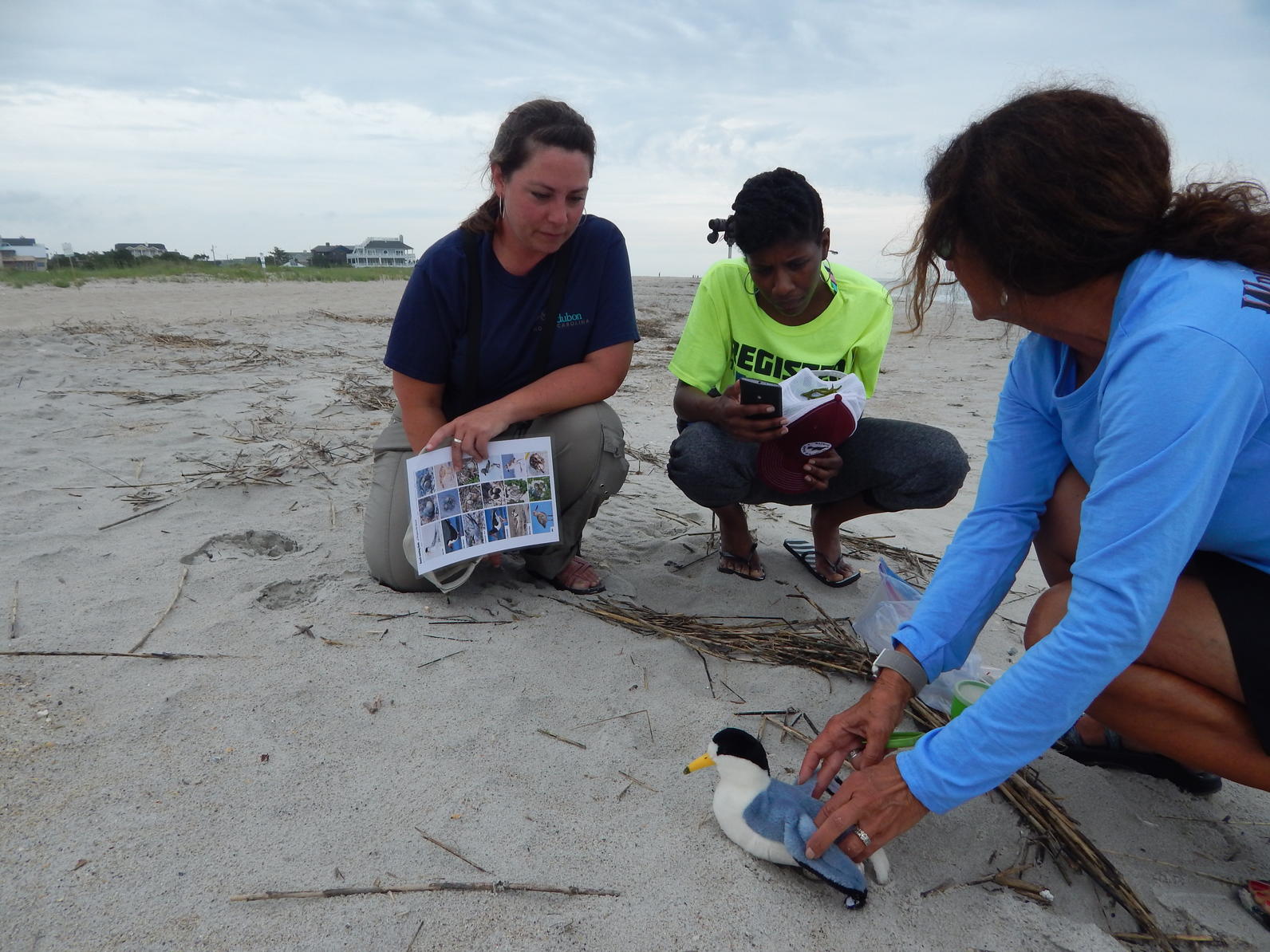I’ve always had a deep love for nature. Ever since I was a young girl, I would roam around my neighborhood looking for wildlife and picking up interesting insects. When I was stressed out, the sun always cheered me up.
I would listen and watch the birds, either flying in search of food or communicating with each other. It always fascinated me when I would see baby birds for the first time frantically bouncing in anticipation of their mom giving them food.
During times of bad weather, I would see big flocks of birds gathering in the trees. It seemed as if they were in a state of confusion or panic as they conversed with each other within the colony. In those moments, I would often wonder what the birds were thinking. Because I grew up and stayed in North Carolina’s Piedmont region all my life, this was my only exposure to bird culture.
I saw birds, but I never took the time to understand them. It wasn’t until I began my work as an Audubon Women in Conservation intern that I started diving into the rich and diverse culture of birds.
I got my first glimpse of the family life of birds during my first week of work, on a trip to Wrightsville Beach to see nesting colonies protected by Audubon’s Beach Bird Stewards. As soon as I arrived at the beach I was greeted by my supervisor, Aimee Tomcho, and one of the stewards and our host, Marlene Eader.
The nesting site was blocked off with posted signs surrounding the area, informing the public that the birds were protected by law and warning beachgoers to keep dogs away from nesting birds. On the same posts were adorable hand-drawn pictures of Black Skimmers, American Oystercatchers, and Least Terns made by students from Wrightsville Beach Elementary School.
While walking on the beach, I saw a family of Black Skimmers –the male was perched on a posted sign while his mate was sitting on the nest below. Our observation of the skimmers was interrupted by a Least Tern that flew in the air and dove right toward Aimee’s head. In disbelief, we all ducked as the bird flew past us and toward Aimee again.

Marlene told us that the bird recognized the Audubon hat and shirt that Aimee was wearing because it’s the same outfit worn by Audubon’s coastal biologists, who physically interact with the nesting colonies. The bird was trying to warn us to stay away from his family. Aimee immediately took off her hat and started to distance herself from the nesting area, only for the Least Tern to start diving after my hat. I laughed as I ran away from the bird.
On hot days, mother Least Terns make a shield with their wings to keep the young shaded from the heat. Throughout the rest of the day, I witnessed several Least Tern parents switching back and forth between watching the nest and cooling off in the water.
I saw how the majestic Black Skimmer hovered over the ocean water catching tiny fish. Black Skimmers chicks are one of the few baby birds that eat fish whole, so it’s very important for a female Black Skimmer to choose a mate with sharp fishing abilities.
All across the nesting area, cute little birds were playing, hiding, jumping and waddling around their parents and siblings. They went on adventures in between the leaves, around sand piles and under little triangular shelters made by a local steward. It truly was an amazing site.
Further down the beach, a pair of American Oystercatchers were grieving over the loss of their recent clutch of eggs. Due to the excessive heat, their chicks never hatched. It is very difficult not to assume they feel emotions much like we do.
The birds remained isolated from the rest of the colony, standing close to each other and then soon giving each other space to grieve in solitude. I took a step back and considered their loss. It wasn’t until that moment that I realized that birds loved, taught their young, and mourned losses just like the rest of us.
The birds made sure to stay close to their children as they learned the necessary skills to grow and survive. Their colony was a strong organized community. All this time I had wondered what was going on in a bird’s mind, only to find out that it’s the same things that go on in our minds: protecting the ones we love.






